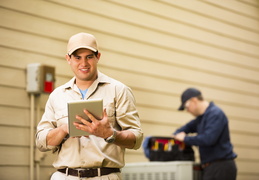If your home uses a heat pump, you might be surprised to learn that one small part—the reversing valve—does a lot of heavy lifting when it comes to keeping you comfortable year-round. It’s a critical component, and if something goes wrong, it’s time to call in the pros. Many customers reach out to us for heat pump repair in Mississauga, ON, when their system isn’t switching modes properly, and the reversing valve is often the culprit.
So, what exactly is a reversing valve, and what does it do?
Simply put, the reversing valve is the part of your heat pump that allows it to switch between heating and cooling. Without it, your system would only be able to work in one direction—either heating or cooling, but not both. The valve accomplishes this by reversing the flow of refrigerant in the system.
The Role of Refrigerant Flow
Your heat pump works by transferring heat. In the winter, it pulls heat from the outdoor air and brings it inside. In the summer, it does the opposite—pulling heat out of your home and releasing it outside. The refrigerant is the medium that carries this heat, and the direction it flows determines whether the system is heating or cooling.
This reversing process is what makes a heat pump so energy-efficient, as it reuses the same cycle for both heating and cooling. By understanding how the valve works, you can better recognize early signs of trouble and call for repairs before the issue gets worse.
Here’s where the reversing valve comes in. This valve changes the direction of the refrigerant flow using a sliding mechanism. When you switch your thermostat from heating to cooling (or vice versa), the reversing valve receives a signal and shifts position. This action changes the route the refrigerant takes through the system.
Key Components of the Reversing Valve
The valve itself is typically located near the compressor. It has four ports: one connected to the compressor, two connected to the indoor and outdoor coils, and one used to direct refrigerant flow. The sliding mechanism inside the valve is controlled by a small electrical solenoid. When the solenoid is energized or de-energized, it causes the valve to shift and reverse the flow.
This one small component controls the entire seasonal behavior of your heat pump, making it one of the most important pieces in the system.
What Can Go Wrong
If the reversing valve fails, your system might get stuck in one mode, or it might stop working entirely. You could also notice poor performance, higher energy bills, or even unusual noises coming from the unit. Diagnosing and replacing a reversing valve requires specialized knowledge and tools, which is why it’s a job best left to trained technicians.
Trying to troubleshoot a reversing valve issue on your own can lead to further damage or refrigerant loss, both of which are expensive to fix.
If your heat pump isn’t switching between heating and cooling properly—or not running efficiently—don’t wait. The reversing valve may be the issue, and our experienced team can help.
Contact Peatson’s Heating and Air Conditioning today for all your HVAC needs.

